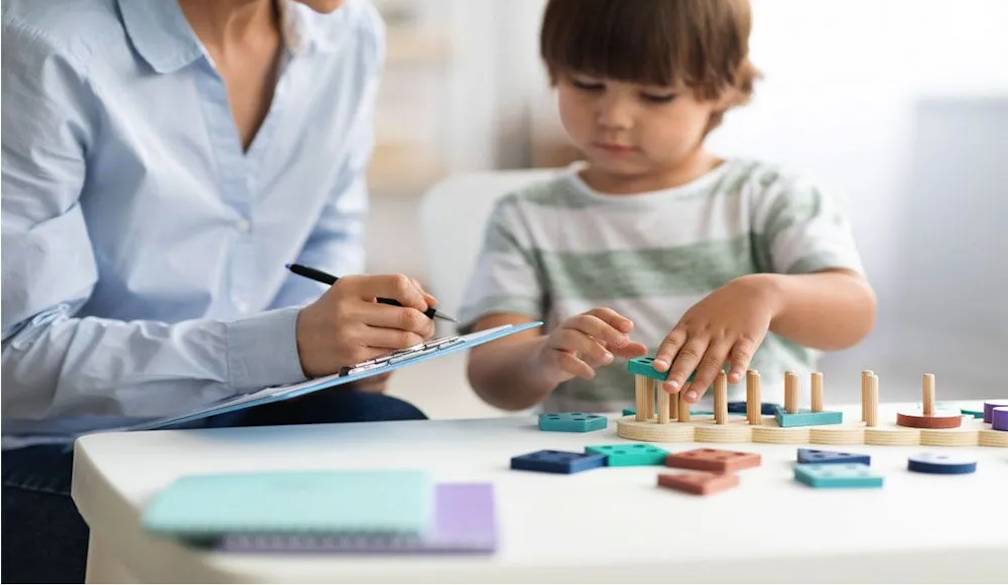Auburn Occupational Therapists Have Pioneered Innovative Tools

The field of occupational therapy (OT) is an indispensable service, helping individuals of all ages achieve independence and enhance their quality of life. Auburn occupational therapists have made groundbreaking tools available for use during occupational therapy practice that have revolutionized how it's delivered - we will explore eight such devices here.
1. Virtual Reality (VR) Systems
Virtual reality systems have changed how occupational therapist Auburn delivers therapy services, offering safe environments where patients can practice real-life skills safely in virtual reality - from simulating daily activities to developing therapeutic exercises - VR systems offer versatile yet efficient therapy tools.
Virtual Reality in Occupational Therapy
VR systems make therapy sessions more engaging for patients, leading to improved compliance and outcomes.
Therapists can create controlled environments to meet specific therapeutic goals while gradually expanding task complexity.
- Data-Driven Insights: Virtual reality systems often feature tracking and analytics features to allow therapists to monitor progress, adjust treatment plans as necessary and optimize care plans as a result of VR sessions.
2. Robot Exoskeletons
Auburn occupational therapists use robot exoskeletons as another cutting-edge therapy tool, helping support patient movements while aiding those with mobility impairments in participating in activities they might otherwise struggle with. These wearable devices provide support while encouraging participation.
Robotic Exoskeleton Applications
- Gait Training: Exoskeletons have proven particularly helpful for patients recovering from spinal cord injuries or stroke, providing resistance during workout sessions as they build strength in muscles.
- Enhance Rehabilitation: Thanks to their precision and adaptability, exoskeletons offer more effective rehabilitation programs tailored to individual needs.
3. Sensory Integration Tools
Sensory integration devices play an integral part in treating sensory processing disorders in both children and adults, with Auburn occupational therapists often turning to various sensory integration devices to help their clients manage sensory input while increasing interaction within their environments.
- Weighted Blankets and Vests: For individuals experiencing sensory processing challenges, weighted blankets and vests offer deep pressure stimulation that may provide soothing effects, while Therapeutic Swings provide vestibular input while aiding balance and coordination.
- Tactile Tools: Items such as textured balls and fidget toys provide individuals with tactile defensiveness or seeking behaviors with tactile tools that support these behaviors.
4. Adaptive Equipment
Occupational therapists in Auburn specialize in customizing adaptive equipment to assist those living with disabilities to perform daily activities independently and recommend and tailor these tools based on each patient's specific requirements.
Examples of Adaptive Equipment
Custom Wheelchairs: Tailored for optimal support and comfort to promote mobility and independence. Adaptive Eating Utensils: Custom-made forks, spoons, and knives which make eating simpler for individuals with limited hand functionality.
- Bathing and Dressing Aids: Long-handled sponges and dressing sticks offer invaluable help when performing personal care duties.
5. Cognitive Rehabilitation Software
Cognitive rehabilitation software can be an invaluable resource in aiding those living with cognitive impairment to recover their mental capabilities and regain full use of their minds. Auburn occupational therapists employ such programs for personalized cognitive training exercises.
Key Features of Cognitive Rehabilitation Software
- Memory Training: Exercise designed to strengthen short and long term memories. Concentration & Focus Enhancing Programs: programs which increase concentration & attention span.
- Problem Solving Skills: Engaging in interactive tasks to build critical thinking and problem-solving abilities are an excellent way to enhance these capacities.
6. Telehealth Platforms
Telehealth platforms have quickly become an indispensable element of occupational therapy since COVID-19 first hit Auburn. Auburn occupational therapists rely heavily on them as part of providing remote therapy sessions and assuring continuity of care to their patients.
Advantages of Telehealth in Occupational Therapy
- Accessibility: By receiving therapy sessions conveniently from home, treatments become much more accessible to those living in remote locations or those who face mobility limitations.
Telehealth enables flexible therapy scheduling that fits seamlessly with busy lifestyles, providing continuity of care in times of emergencies or crises.
7. 3D Printing Technology
Advancements in 3D printing technology have given occupational therapists new ways to meet patient demands with personalized therapeutic devices and equipment tailored for individual patient needs, using 3D printers as one tool in meeting these challenges. Auburn occupational therapists rely on these advancements as part of their repertoire in meeting those demands.
3D Printing in Occupational Therapy
- Customized Orthotics: Generating customized orthotic devices tailored specifically for each person that provide additional support and comfort, such as customized grips on utensils or writing aids designed specifically to assist.
- Adaptive Aids: Engineering tailored tools specifically created to assist with certain tasks - for instance modified grips for utensils or tailored writing aids.
Prosthetic Solutions Group's (PSG) mission is to create affordable and customized prosthetic limbs at an economical price for our patients.
8. Biofeedback Devices
Biofeedback devices offer patients control of physiological functions which would otherwise remain voluntary, making the devices great resources to teach clients how to cope with stress, anxiety and related disorders. Auburn occupational therapists utilize such devices when teaching stress relief training techniques for patients suffering from stress-related ailments like anxiety.
How Biofeedback Devices?
- Work Monitoring: Biofeedback devices monitor physiological activities like heart rate, muscle tension and skin temperature to provide real-time feedback in real time - usually through visual or auditory signals - which helps patients learn to regulate these functions themselves.
- Therapeutic Applications: Effective solutions can be utilized for pain management, relaxation training and increasing motor functionality.
Auburn occupational therapists are using innovative tools to revolutionise occupational therapy practice.
Bottom Line
From virtual reality headsets and robotic exoskeletons, to telehealth platforms and 3D printing technologies - you can find occupational therapist and remain at the cutting-edge of innovation so as to offer their patients exceptional care and support.

















